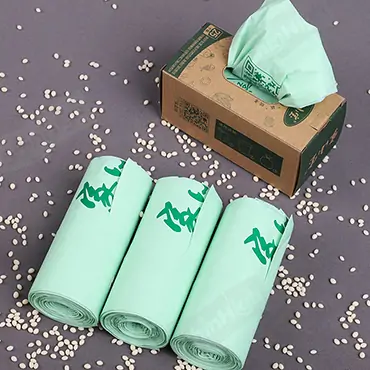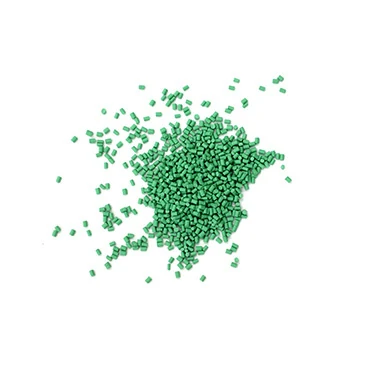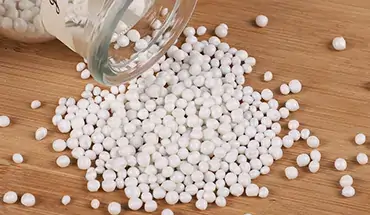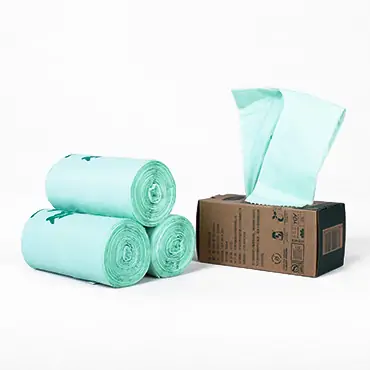The global plastic pollution crisis has reached alarming proportions, with over 380 million tons of plastic produced annually. Much of this plastic ends up in landfills, oceans, or ecosystems. Traditional plastics derived from fossil fuels are non-biodegradable and persist in the environment for centuries, fragmenting into microplastics that contaminate soil, water, and even the human food chain.
To combat this, scientists have developed a range of alternatives, including biodegradable polymers like PLA (polylactic acid) and PBAT (polybutylene adipate terephthalate). While these materials offer partial solutions, they often fall short in terms of durability, cost-efficiency, or compatibility with existing recycling infrastructure.
Among these innovations, Green Polyethylene (Green PE) stands out as a game-changing bio-based plastic. Unlike fully biodegradable alternatives, Green PE retains the performance advantages of conventional polyethylene (PE) while significantly reducing its environmental footprint. This article explores the science, benefits, limitations, and future potential of Green PE in the transition toward a sustainable plastic economy.
We know that PE is non-biodegradable and is a major source of plastic waste worldwide. Therefore, we proposed the 3R principles (Reduce, Reuse, and Recycle) and recycling methods as solutions to the problem of polyethylene pollution. At the same time, we can also modify the chemical structure of PE to increase the level of degradation.
The advantage of PE lies in its durability, but this also becomes its drawback. Even if we dump it in a landfill for five hundred years, it will still be difficult for microorganisms to break down. Generally speaking, degradation is influenced by multiple factors, including the material’s own properties, chemical composition, crystal structure, molecular weight, and microbial type.
The anti-degradation property of PE can be attributed to the stability of its chemical structure and the difficulty in breaking it down. By adding bio-based materials, we can change the structural stability of PE, making it easier to fragment into small molecules that microorganisms can then act upon to complete degradation. Adding bio-based materials reduces the use of petroleum and the production of PE. Most importantly, the biomodified plastics of PE blends prepared using natural bio-based materials have consistent properties with traditional PE.
You may be puzzled about what are the biomass components in Green PE are. Corn, sugarcane bagasse, eucalyptus fiber, rice husks, bamboo, etc. are all compatible with PE and exhibit good performance.
- Advantages of Green PE:
Reduced Carbon Footprint: Utilizing renewable resources significantly lowers reliance on fossil fuels, mitigating greenhouse gas emissions and contributing to a more sustainable carbon cycle.
Identical Material Properties: Green PE boasts the same desirable characteristics as conventional PE, including durability, tear resistance, and flexibility. This allows for seamless integration into existing manufacturing processes and applications without compromising product performance.
Full Recyclability: Crucially, Green PE is fully compatible with existing PE recycling streams. This allows for its incorporation into a circular economy, where materials are continuously reused and recycled, minimizing waste and resource depletion. Its superior material properties compared to recycled conventional PE, specifically its tear resistance, make it a valuable addition to the recycling stream.
Improved Environmental Profile: While not biodegradable, the use of renewable feedstocks and the potential for multiple recycling cycles significantly reduce the overall environmental impact of Green PE compared to its conventional counterpart.
However, although Green PE is more vulnerable to microbial attacks and undergoes more severe biodegradation (test data show that the weight loss ranges from 1% to 47%), it is still not possible to completely or more than 50% degrade PE into biomass, carbon dioxide, water and minerals according to standards such as ASTM D6400, ASTM D5988, ISO 17556 and EN 13432 (established for biodegradable plastic materials).
- The Limitations of Green PE:
It is crucial to acknowledge that Green PE is not a silver bullet solution to the plastic crisis. Despite its numerous advantages, it shares one key drawback with traditional PE: it is not biodegradable. This means that Green PE products, if improperly disposed of, will persist in the environment, albeit with a lower carbon footprint. Therefore, robust waste management systems and responsible consumer behavior remain essential.
Furthermore, the production of Green PE, while relying on renewable resources, still requires land and energy. We must carefully consider sustainable land use practices and the potential for competition with food crops to ensure that the benefits of Green PE outweigh any potential negative impacts.
Companies like ShinHigh Bio are leading the charge in Green PE production, offering materials with bio-based content ranging from 10% to an impressive 99%. This high proportion of renewable raw materials translates to a substantial reduction in greenhouse gas emissions throughout the product lifecycle – from “cradle to factory.” Furthermore, a life cycle assessment, often referred to as “cradle to grave,” would likely reveal further environmental benefits compared to traditional PE.
The Future of Sustainable Plastics:
Green PE represents a valuable transitional technology, bridging the gap between our current reliance on fossil fuel-based plastics and a future where truly biodegradable and compostable alternatives are widely available and cost-effective.
Continued research and development in bioplastics, coupled with improvements in waste management infrastructure and a shift towards a circular economy, are essential for achieving a truly sustainable future. Green PE, while not a perfect solution, plays a vital role in this transition, offering a more sustainable alternative to conventional PE while paving the way for even more innovative solutions in the years to come. By embracing Green PE and continuing to push the boundaries of materials science, we can move closer to a world where plastic pollution is a relic of the past.





